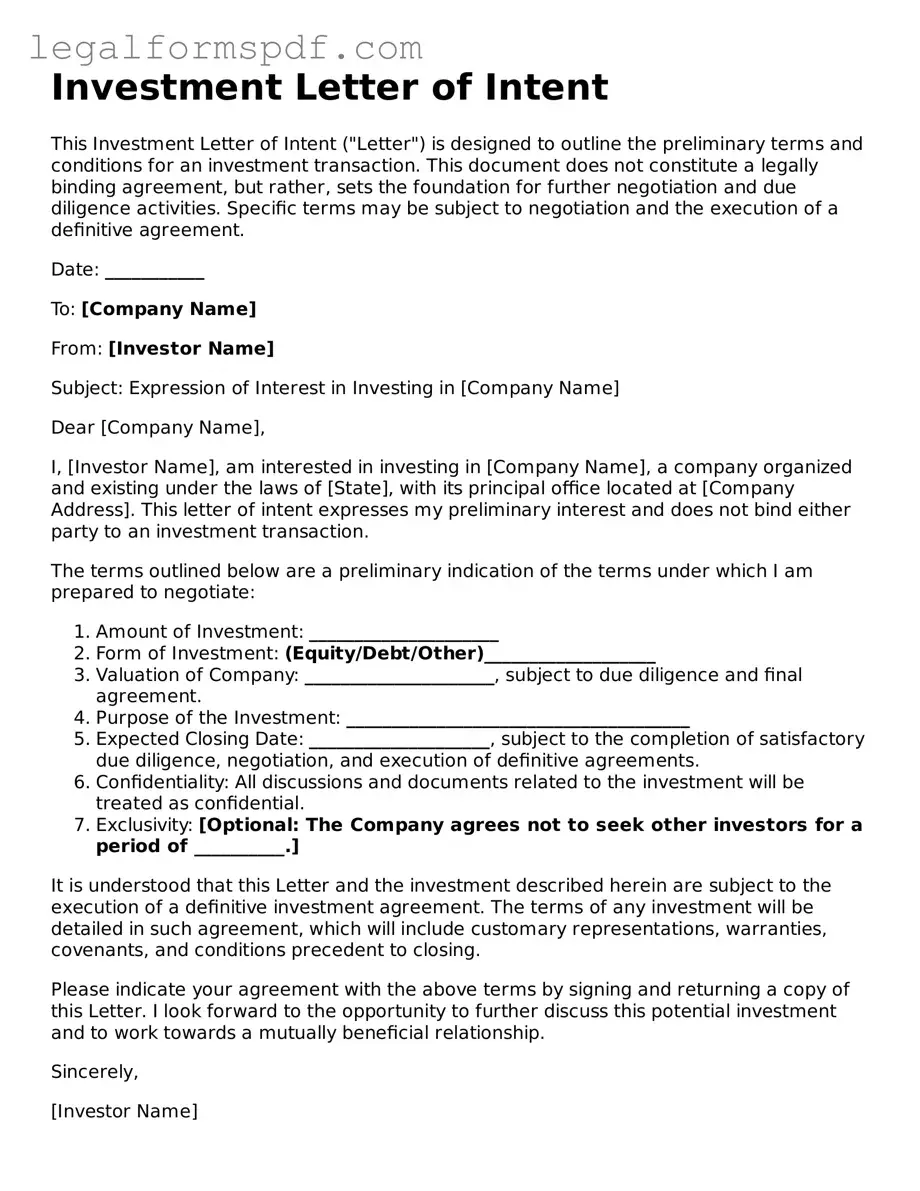An Investment Term Sheet is quite similar to an Investment Letter of Intent as both outline the preliminary agreement terms between investors and the company before finalizing the investment. While a Letter of Intent includes a broader intention to invest, the Term Sheet goes into more detail about the investment’s terms and conditions, such as the valuation of the company, the amount of investment, and any specific conditions tied to the investment.
A Memorandum of Understanding (MOU) shares similarities with an Investment Letter of Intent because it also signifies a mutual agreement on the intent to enter into a formal agreement. An MOU is more flexible and can be used in various agreements, not just investments. It outlines the expectations and responsibilities of all parties before drafting a formal contract, serving as a foundation for the forthcoming detailed agreement.
Non-Disclosure Agreements (NDAs) are crucial in the initial stages of investment discussions, akin to an Investment Letter of Intent. NDAs protect sensitive information shared during the negotiation and due diligence process. While the Letter of Intent indicates a willingness to proceed under certain terms, the NDA ensures that all disclosed financials, strategies, and intellectual property remain confidential among the parties involved.
A Purchase Agreement often follows an Investment Letter of Intent in business transactions, especially when dealing with the acquisition of assets or shares. This document is detailed, outlining the specific terms, conditions, prices, and warranties related to the sale. Whereas the Letter of Intent signals the preliminary commitment to such transactions, the Purchase Agreement finalizes the deal, incorporating the detailed terms agreed upon.
Shareholder Agreements are also akin to an Investment Letter of Intent when new investments are made. This document specifies the rights and obligations of shareholders, including how the company is managed and how disputes are resolved. While a Letter of Intent suggests an initial pledge to invest, the Shareholder Agreement establishes the ongoing relationship and operational dynamics among investors post-investment.
Partnership Agreements resemble an Investment Letter of Intent as they lay the groundwork for a formal arrangement amongst parties seeking to embark on a business venture together. Both documents serve as a prelude to more definitive agreements and set forth the basic framework of the partnership or investment, including roles, investment amounts, and profit distribution, yet the Partnership Agreement delves deeper into the operational aspects of the partnership.
The Heads of Agreement document has similarities with an Investment Letter of Intent in its function as a precursor to a formal agreement. It captures the key points of a deal in its infancy, intended to guide the drafting of final agreements. Though less formal than a contract, it signifies a seriousness to proceed, akin to the commitment shown by an Investment Letter of Intent.
Letters of Interest, although generally broader and less specific than an Investment Letter of Intent, serve a similar purpose in expressing a party’s preliminary interest in pursuing a deal or project. This document can be utilized in various contexts, from job applications to real estate development proposals, providing a broad indication of intent without delving into the specifics of the contemplated agreement.
Finally, the Confidentiality Letter often accompanies or precedes an Investment Letter of Intent, emphasizing the importance of maintaining the confidentiality of negotiations and information exchange during the investment discussion process. While it specifically addresses the non-disclosure of information, its usage complements the Letter of Intent by safeguarding sensitive data during preliminary discussions.
